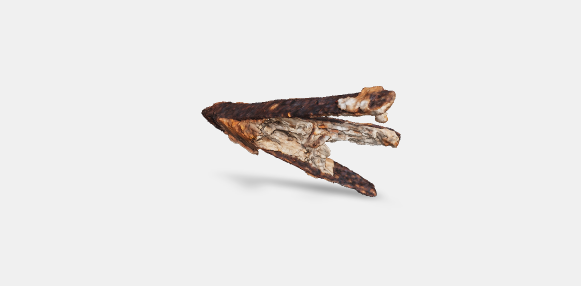Pile-shoe. Corrosions. The metal flakes off very easily. It is composed of four wings that join themselves to form a tip (1). Metallic reinforcement at the tip of a beam. Often used in ancient times, it was especially known for its usage in underwater construction.
The artefact does not present signs of biological colonisation.
Giuliani C.F. 1990, L’edilizia nell’antichità, Roma.
Medaglia S. 2002, Materiali erratici dal mare di Kaulonia, in Archeologia Subacquea, Studi Ricerche, Documenti, III, pp. 163-185.
Ruegg D. 1983, The underwater excavation in the Garigliano River: final report 1982. The Roman port and bridge at Minturnae, Italy, in IJNA 12.3, pp. 203-218.
Ucelli G. 1950, Le navi di Nemi, Roma.
1 The wings (also called arms) were united up to about the half of their length by metallic walls. None of them has survived. One of the arms bears a “male” in the end section that served as a toggle.
2 See UCELLI 1950, p. 125, note 2; RUEGG 1983, pp. 210 and ff. and figs. 8-9; GIULIANI 1990, pp. 129 and ff., figs. 5.6, 5.8. During the underwater surveys in 1996, a very similar iron pile-shoe was found (according to S. Mariottini).



